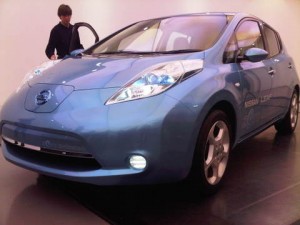The credibility of zero emission vehicles zoomed forward at the end of November (2010) when the 100% electric Nissan LEAF was named 2011 European Car of the Year.
The first mass-market zero-emission vehicle for the global market beat 40 contenders to win motoring’s most important accolade. The LEAF’s rivals included just the sort of top European brands you’d expect. The jury included 57 leading motoring journalists from 23 European countries.
“The jury acknowledged today that the Nissan LEAF is a breakthrough for electric cars. Nissan LEAF is the first EV that can match conventional cars in many respects,” said Håkan Matson, President of the Jury, Car of the Year.
There are three other electric vehicles in the pipeline from Nissan, and four additional electric vehicles from Renault.
Nissan LEAF is powered by a compact electric motor in the front of the car, which drives the front wheels, with a maximum speed of 90mph. The electric motor is powered by a Nissan-developed laminated lithium-ion battery with an output of more than 90kW. Nissan claim a range of more than 100 miles (New European Driving Cycle) between charges making it a practical proposition for many urban drivers.
The vehicle comes with features such as regenerative braking, air conditioning, satellite navigation, parking camera and advanced on-board IT and telematics systems. The owner will be able to set charging functions to monitor the car’s current state of charge and the remaining battery capacity, as well as to heat or cool the interior of the car remotely via mobile phone or computer.
Deliveries in Japan and the United States begin this month ( December). The first UK customers will get their LEAFs in March. The zero-emission car is currently being built in Japan, but will also be produced – along with its batteries — in Sunderland, England from early 2013.

